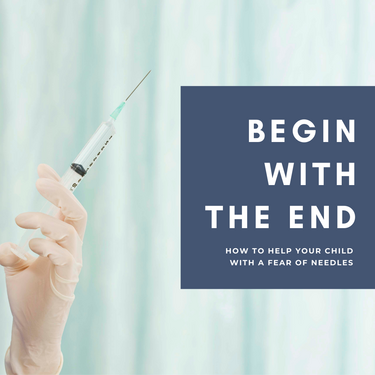
This is a sponsored post by Gebauer Company, makers of Pain Ease
Needle phobia is seldom just about the moment of the injection. It’s a whole combination of things including the lead up, the actual process, the feelings and the aftermath.
When people disclose that they have a fear of needles, it’s important to understand that fear involves more than just the poke. As a child life specialist, we are trained to assess and consider a multitude of factors that may impact how a patient copes with something. We take into account previous experiences, what has or hasn’t worked in the past, as well as the temperament of the patient. A preparatory approach of giving patients information and tools ahead of time leads to patient-reported less intense pain1.
Understanding that needle phobia won’t be cured in just one experience means that a slow and steady approach is one way to work with this population of patients. When dealing with a true needle phobia case, little victories are big victories. One method to address needle phobia is to start with the end in mind. Talk with the patient as if they are already headed out the door after it’s over and work backwards. This technique allows the patient to visualize the end and see that they can actually get through the experience.
Start by unveiling the experience backwards. Prior to walking out the door back to their car, where are they? Are they checking out with the nurse? Are they waiting for discharge? Opening up the conversation with these non-threatening parts of the process is a way to gain trust and assess your patient. You’re getting to know the person, not the phobia. When they leave here, where are they going? What will their meal be this evening?
Slowly, and mindfully, ask questions that allow them to lead the conversation. This way, you’re not the one asking a probing question. You are simply responding to a scenario they’ve already verbalized. Here’s an example: if the patient says “they see themselves leaving the room,” ask them to describe what room they are leaving. Allow them to elaborate on details such as what items they picture in this room and where they were sitting?.
As you lead them to the scenario of actually receiving the injection, work backwards again. Talk about the Band-Aid or co-band, talk about holding pressure with a cotton ball for 1 minute, talk about the sensory experiences that are involved in post-injection. As you discuss these parts, be aware of possible triggers and get as hands-on as possible. Let them touch the band-aid. Let them see the cotton ball.
Focus on the best-case scenario. As you guide them to the moment of injection, begin talking about strategies that are best-case. What would be the best possible scenario for an injection? Is it being pain free? Looking away? Having distraction available? Offer patient comfort products to validate and normalize fears. These products exist because others feel the way they do. Allow time to get specific about possible coping strategies. Alongside the patient, practice deep breathing or count to while you squeeze a stress ball. Encourage them to pull out their phone to watch their favorite YouTuber or listen to their favorite song. Studies show that when distraction is offered to children receiving immunizations, less distress is reported when compared to other forms of support2. Topical anesthetic skin refrigerants, such as Pain Ease, can also be used to support patient comfort during procedures that require needles.
Through your “begin with the end” approach, you’ve opened up communication with your patient, allowed them to visualize a successful outcome and created a plan to incorporate coping skills during their experience. For more information on how to support children and their caregivers going through medical experiences, go to Gebauer and ChildLifePodcast.
Pain Ease Important Risk and Safety Information:
Consult your pediatrician when using on children 4 years old and younger. Do not use on large areas of damaged skin, puncture wounds, animal bites or serious wounds. Do not spray in eyes. Over spraying may cause frostbite. Freezing may alter skin pigmentation. Use caution when using product on persons with poor circulation. Apply only to intact oral mucous membranes. Do not use on genital mucous membranes. The thawing process may be painful and freezing may lower resistance to infection and delay healing. If skin irritation develops, discontinue use. CAUTION: Federal law restricts this device to sale by or on the order of a licensed healthcare practitioner.
1 Jaaniste T, Hayes B, von Baeyer CL. Effects of preparatory information and distraction on children’s cold-pressor pain outcomes: a randomized controlled trial. Behav Res Ther. 2007 Nov;45(11):2789-99. doi: 10.1016/j.brat.2007.07.005. Epub 2007 Jul 24. PMID: 17727813.
2 Manimala, M. R., Blount, R. L., & Cohen, L. L. (2000). The effects of parental reassurance versus distraction on child distress and coping during Immunizations. Children’s Health Care, 29(3), 161–177. doi: 10.1207/s15326888chc2903_2.
